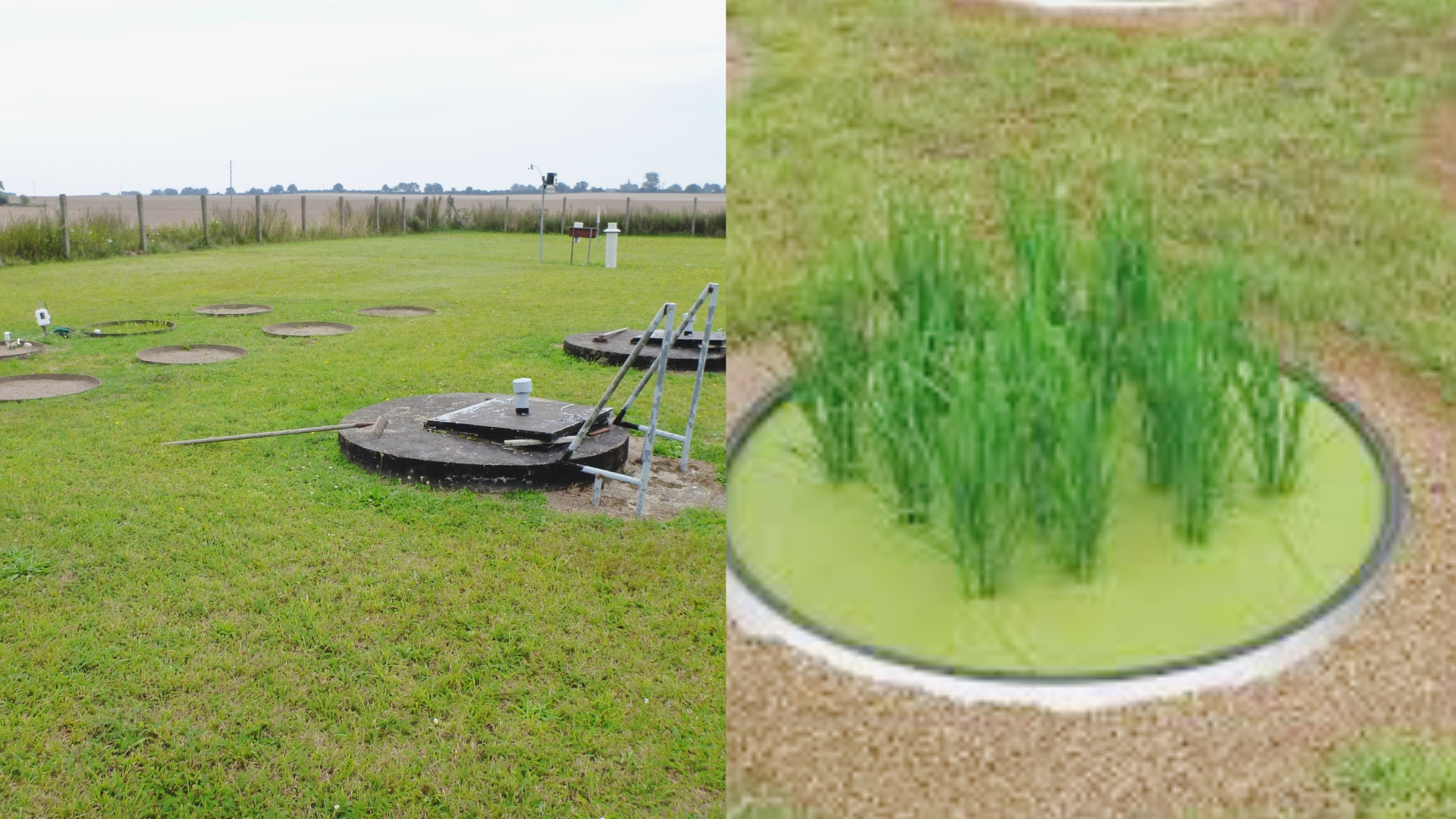In this article, I will discuss How to measure Evapotranspiration.
Basically there are four most popular methods to measure Evapotranspiration.
- Lysimeter
- Field Experiment
- Soil moisture depletion study
- Water balance method
Table of Contents
1. Lysimeter:
Lysimeter is a device used to measure actual evapotranspiration. The Amount of Precipitation receives and water loss due to Evaporation can be measured using Lysimeter.

In this method, the growing crops are kept in Lysimeter, which is installed in the growing crop fields. The device measured water losses and gain.
The crop in the Lysimeter should be the same as in the field. Weighing Lysimeter measured the number of water crops used by constantly weighing a huge block of soil in a field to detect losses of soil moisture and water gain from precipitation.
This method is appropriate for the calculation of water losses in the field.
Different Lysimeters ( in size ) are used for different types of crops.
For Small Crops;
Lysimeter Depth = 2 meters or 2 m3
For Tall Crops;
Lysimeter Depth = 3 meters or 4 m3
Water is filed in the Lysimeter respective to the Irrigation provided in the field. At any time during the growing period of crop, the water ratio should be 1:1 for Lysimeter and irrigation for field crops.
If there is any percolation or overflow then it can be measured.
Disadvantages of Lysimeter:
- The temperature difference between lysimeter and in the field crop
- The difference in the water table
- Soil texture and soil density in Lysimetr and outside
2. Field Experiment:
In the Field Experiment method, only seasonal water requirements are calculated.
Seasonal water requirement measured by formula as given below.
WR=IR+ ER (Ms – Me)
where,
WR = seasonal water requirement, mm
IR = total irrigation water applied, mm
ER = seasonal effective rainfall, mm
Ms = moisture percentage at the beginning of the season
Me = moisture percentage at the end of the season.
The method requires that the amount of water applied to a field is measured accurately. This method, though satisfactory for computing seasonal water requirements does not provide information on intermediate soil moisture conditions, short-term use, profile use, deep percolation losses, and peak use rate of the crop.
In this method, water supplied to fields must be calculated properly.
It is only good to measure seasonal water requirements only and does not give information about soil moisture conditions and other related parameters.
3. Soil Moisture Depletion Study:
This method is used to calculate the consumptive use of the irrigation field. Feld crops must be grown on uniform soil.
The depth of groundwater should not affect soil moisture fluctuation in the root of the crop.
In this Method, Soil moisture is measured at a different depth numerous times during the growth period of the crop.
After taking numerous readings, we calculate average Consumptive use.
Average Consumptive use. = Total Consumptive Use / Nos of measurement
Seasonal consumptive use can be measured by the summing of consumptive use values of each sampling interval.
4. Water Balance Method:
This method is appropriate for large areas and over a long span of time period.
The water Balance Method is calculated by the formula as follows
Precipitation = Evapotranspiration + surface runoff + sub-surface drainage + change in soil water contents
In this method, all necessary parameters are measured to calculate Evapotranspiration.
The water Balance Method is also called the inflow-outflow method.
Faqs
Evapotranspiration is when water from the ground and plants turns into vapor and goes into the air. It’s important to measure because it helps us know how much water is being lost, which is useful for things like farming and taking care of our water.
We can measure evapotranspiration in different ways. One way is by looking at the weather and using special equations. Another way is by using machines that measure the air and the water to see how much is going into the air. We can also use containers in the ground to see how much water is coming in and going out.
Evapotranspiration is affected by things like how hot it is, how humid it is, how fast the wind is blowing, and how much sun there is. The type of plants and how many there are can also make a difference.
Yes, we can measure evapotranspiration in different places. We can measure it in small areas using special tools, or we can use satellites to look at big areas like whole countries or even the whole world.
We measure evapotranspiration for many reasons. For example, it helps farmers know how much water to use for their crops. It also helps us manage our water resources better, understand the climate, take care of nature, and plan cities in a good way.
